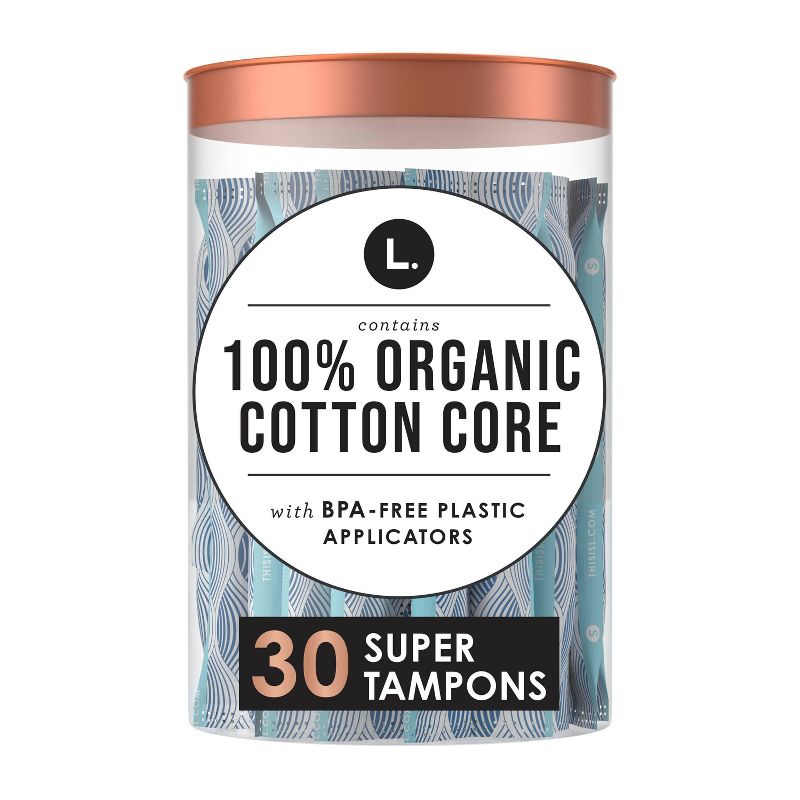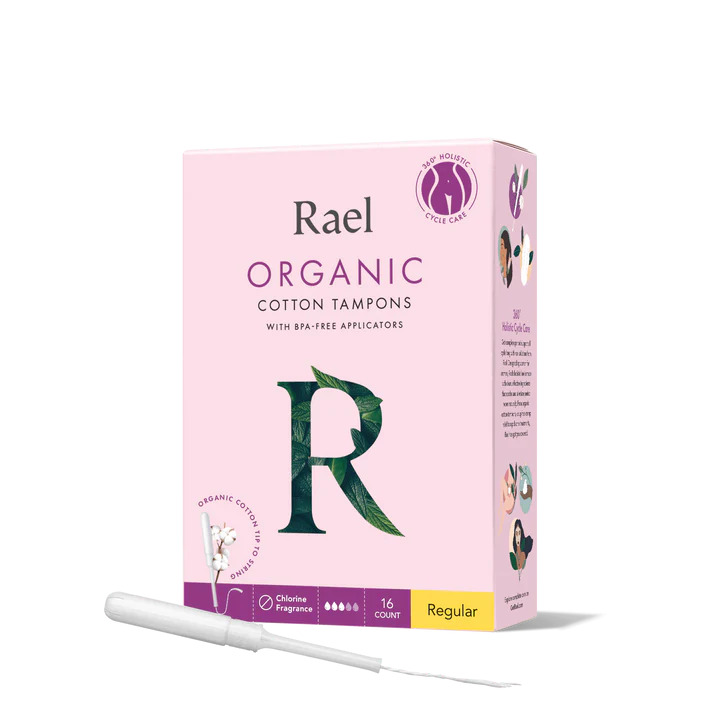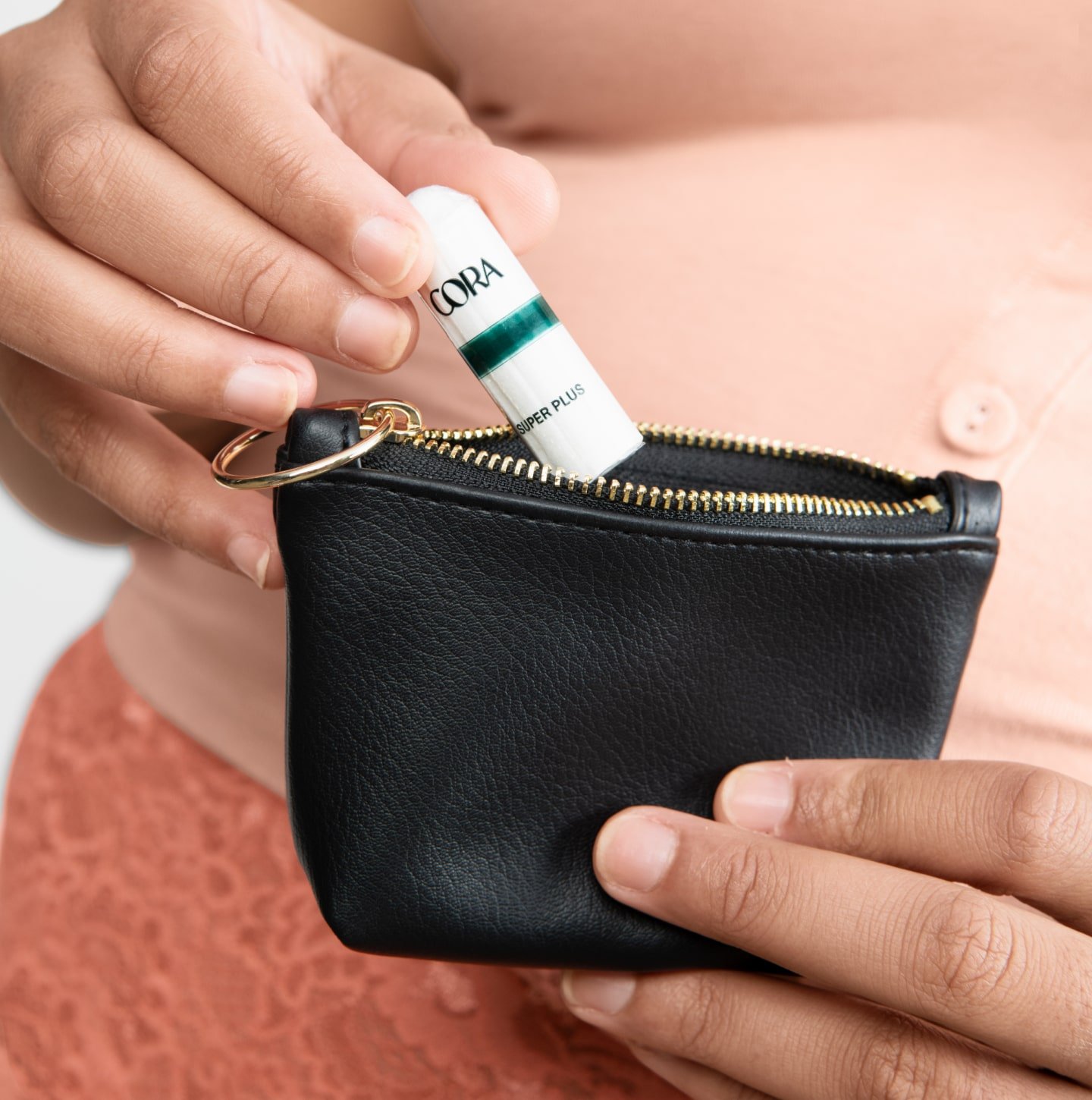5 Things You Need to Know About Common Tampon Ingredients
Understanding tampon components
Here are the basics: In order to be cleared by the FDA, tampons must be made of cotton, rayon, or a blend of both. The FDA then reviews data submitted by the manufacturer to ensure that both the tampon and the applicator are made with safe materials. Here are a few criteria they look for:
- tampon absorbency
- strength and integrity
- whether they contribute to the growth of certain harmful bacteria
- whether they change normal bacteria levels in the vagina
The 5 most common tampon ingredients
Cotton and rayon aren't the only ingredients that wind up in tampons, though. Below, you'll find a breakdown of five of the most common tampon ingredients—so you can make whatever decision feels right for your health.
- Gunvor Ekman-Ordeberg, MD, PhD, OB/GYN and co-founder of DeoDoc Intimate Skincare
- Philip Tierno, MD, clinical microbiology and pathology professor at New York University
Remember: If you have lingering questions about safe tampon use and what menstrual product materials deserve space in your bathroom, or things like whether tampons can cause cramps, write down your list of questions and bring them to your OB/GYN or another medical provider you trust. The frustrating fact is that tampon ingredients—and menstrual materials in general—are extremely under-researched, so working with a doctor can help you hone your judgment when you're walking the aisle of the drugstore or deciding which tampon subscription makes sense for you.
1. Rayon
Rayon is an ingredient derived from wood pulp. According to The Southwest College of Naturopathic Medicine and Health Sciences, rayon's high levels of absorbency may cause the bacteria Staphylococcus aureus, or staph, to grow and can cause toxic shock syndrome (TSS), a rare complication brought on by bacterial infection. However, it's worth noting that only 3 to 6 people in 100,000 get TSS per year.
Philip Tierno, MD, a clinical microbiology and pathology professor at New York University, put it this way in a 2014 study: "[Viscose rayon] was the best of the bad four ingredients1 [found in tampons], three of which have been taken off the market."
2. Cotton
Although cotton is slightly less absorbent than rayon, Dr. Tierno holds that an organic 100 percent cotton tampon is really your best bet. Organic cotton tampons are free of dyes, plastics, bleach, fragrances, and pesticide-treated cotton, while cotton blends may contain any of those ingredients.
{{post.sponsorText}}
3. Titanium dioxide (Dioxin)
Dioxin is an environmental pollutant that has been linked to endocrine disruption2 and cancer. While dioxin was once found in conventional tampons when the wood pulp used to make rayon was bleached using chlorine gas, the FDA has since put a stop to the bleaching of tampons with elemental chlorine. Thus, dioxin is really only found in teeny, tiny amounts in tampons. Is that 100 percent safe? The answer is... we don't know yet. More research still needs to be done.
4. Fragrance
If you don't buy a 100-percent organic tampon, it may contain fragrances, or organic compounds with strong-smelling odors. And while many sources will claim that this is undeniably a bad thing, the safety of fragrances in tampons hasn't been studied. And thus, we again truly don't know either way.
5. BPA
BPA is a hormone-disrupting chemical that comes from producing plastic, and old-school tampon applicators may still use the material. However, the widespread claims that BPAs cause cancer just aren't upheld by science, according to the UK Cancer Research Center. Plus, it's still somewhat unclear which tampons use BPAs in their applicators.
Frequently asked questions
What's the difference between regular tampons and organic tampons?
According to OB/GYN and DeoDoc Intimate Skincare co-founder Gunvor Ekman-Ordeberg, MD, PhD, most regular tampons are made of synthetic fibers, including plastics, rayon, viscose, and cellulose. “They look white so many think it’s cotton,” she says. Because of this, she points out that many people assume all tampons are made of organic cotton when that’s not the reality—other chemicals can be intertwined.
“100-percent organic cotton tampons, however, are only made of 100 percent organic cotton that is grown without herbicides and pesticides,” she adds. This is notable, as studies have found that these chemicals can trigger elevated levels of oxidative stress biomarkers3.
How do tampon ingredients affect the body?
As with many things, more research is needed to know the true effect that classic menstrual care products have on the human body. “There are unfortunately not enough studies on the health effects of synthetic fibers/plastics and the shedding of fibers in the vagina,” Dr. Ekman-Ordeberg says. Meanwhile, she points out that it’s common for people to visit the OB/GYN and report discomfort/pain, only to find out it’s due to “irritation from menstrual care products made out of plastics, rayon, viscose, and cellulose.” This is also a good reason why you should chuck any expired tampons and—if you find yourself wondering how long can you leave a tampon in—to change them regularly when you're on your period.
Is it safe to use tampons—organic or otherwise?
While many, many people use tampons due to the sheer convenience of the menstrual care product, Dr. Ekman-Ordeberg admits that she doesn’t regularly recommend them. “With my 50 years of clinical experience as an OB/GYN, I always advise my patients against using regular tampons because of the issues I've observed,” she says. “The vagina is highly permeable and vascularized, making it very absorbent to any material it is being exposed to—yet, there's a notable lack of research on the health implications. I would like to see more studies being conducted on the effects of plastic/synthetic tampons in relation to women's health but also have FDA regulations that force the tampon companies to disclose the ingredients their tampons are made of. This is not required today.”
Are organic tampons really better for your health?
Yes, there is good reason to avoid chemicals in tampons. According to Dr. Ekman-Ordeberg, if you’re going to use tampons, organic tampons are better—for yourself and the environment. “Organic cotton is the cleanest, most breathable, and non-irritating material for both the vagina and vulva,” she says. “Of course, you also have the environmental benefit, as synthetic materials, such as plastics, are not biodegradable.”
That means, you can wear organic tampons throughout the day and not have to worry about what's going into your body. You can exercise, work, pee, and yes, even poop with a tampon in.
With that in mind, keep reading to uncover a few of the most popular organic tampons on the market.
The best 100% cotton tampons to buy

L.’s tampons are made with a 100-percent cotton core. They are also free of chlorine bleaching, pesticides, rayon, fragrances, or dyes. However, they do also contain polyester, glycerin, paraffin, and titanium dioxide.
Number of tampons per box: 30
Price per tampon: $0.33
Materials: Cotton polyester, glycerin, paraffin, titanium dioxide
Applicator: BPA-free plastic applicator
Sizes available: Light, regular, and super
Pros:
- Convenient and comfortable BPA-free plastic applicator
- Best value per tampon
- Housed in a chic container that won’t take away from your bathroom decor
Cons:
- Contains trace amounts of titanium dioxide

Another option with a cotton core, Rael features a very small ingredients list that includes 100-percent certified organic cotton, water-repellant wax (for the tampon string), and a BPA-free plastic applicator. The company also offers panty liners and pads if those options are more comfortable for you.
Number of tampons per box: 16
Price per tampon: $0.56
Materials: 100% certified organic cotton (core and cover), cotton (sewing thread), and water-repellent wax (string)
Applicator: BPA-free plastic applicator
Sizes available: Regular and super
Pros:
- Convenient and comfortable BPA-free plastic applicator
- You can subscribe to save 15 percent
- Provide up to “8 hours of leak-proof confidence”
Cons:
- Only sold in regular and super absorbencies

If you prefer to ditch the plastic and opt for an applicator-free tampon, this option from Cora is a safe bet. All you’ll find in this tampon is 100-percent organic cotton and a water-resistant wax coating for the string. Bam, that’s it.
Number of tampons per box: 18
Price per tampon: $0.50
Materials: 100% organic tampon (tampon and string) and paraffin (string)
Applicator: N/A
Sizes available: Light, regular, super, and super plus
Pros:
- Sold in four absorbencies
- No applicator which means less plastic waste
- Super small, making them especially easy to carry in purses
- You can subscribe to save 5 percent
Cons:
- Applicator-less design can be messy
- Applicator-less design can take time to get used to, which can make for uncomfortable insertion at first
- Nicole, Wendee. “A question for women’s health: chemicals in feminine hygiene products and personal lubricants.” Environmental health perspectives vol. 122,3 (2014): A70-5. doi:10.1289/ehp.122-A70
- Mocarelli, Paolo et al. “Dioxin exposure, from infancy through puberty, produces endocrine disruption and affects human semen quality.” Environmental health perspectives vol. 116,1 (2008): 70-7. doi:10.1289/ehp.10399
- Singh, Jessica et al. “Tampon use, environmental chemicals and oxidative stress in the BioCycle study.” Environmental health : a global access science source vol. 18,1 11. 11 Feb. 2019, doi:10.1186/s12940-019-0452-z
Loading More Posts...